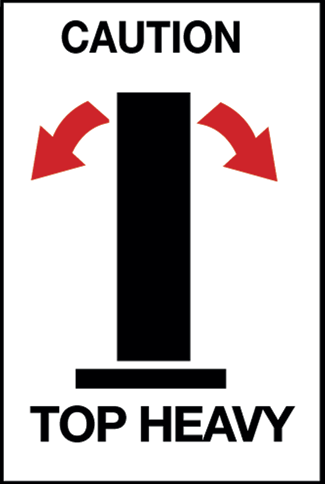If you know about a thing or two about plan administration, you know about the top-heavy rules. The top-heavy rules generally ensure that the lower paid employees receive a minimum benefit if the plan is top-heavy. A plan is top-heavy when, as of the last day of the prior plan year, the total value of the plan accounts of key employees is more than 60% of the total value of the plan assets.
This article isn’t actually about the top-heavy rules, but it deals with a different form of top-heavy, it’s the problems of organization that are top-heavy in the fact that they have too many generals on top and not enough soldiers to do the work of the organization.
I once belonged to a not-for-profit organization, where there were 25 core members who worked hard and the problem was that there was about 36 positions of power in the organization. The problem is that you have too many people interested in the power of the position or just the title of the position and not enough people who would actually help in the work of organizing events or fundraising. Being someone that was heavily involved in organizing events, this was problematic when dealing with people who want the honor and the glory, but don’t want to do the work to justify it.
Positions of power can be a problem for those who want the title and don’t want to do any of the work that they think is too menial for their position. It reminds me of a woman that the first third party administration form (TPA) I ever worked with, hired as a plan administrator. This administrator came in on her first day of work and there was nothing for her to do. So another administrator asked her to make copies of some plan documents and reports The woman quit that day, apparently making copies was too much to ask of a plan administrator. Organizations that have too many people in leadership and not enough day-to-day employees will recognize many times that the leadership doesn’t want to get their hands dirty and do the work necessary to keep the organization moving.
That TPA was a failure as a stand alone business and was a failure again after being purchased by a national consulting firm because it had 6 owners who became senior management upon the sale to a national consulting firm and only about half of them had a strong work ethic to be there everyday from 9-5 pm. The problem with too much leadership is not only are they top-heavy in titles, they’re also top-heavy in salaries. A TPA that had 70 employees didn’t have enough revenue to pay those 6 “managing directors” and have that national consulting firm pay off the financing used to purchase that business. It’s a lot like the law firms I was a member of that had way too many partners when compared to the number of associates it had. It creates a financial problem when you have too little associates to support the work of the partners and the billable hours need to be churned out to support those at the top. That’s why mid-sized law firms never do as well as larger firms who have much more associates than partners.
For an organization in the retirement plan business, you need enough people to do the heavy lifting to help the people at the top manage the business and grow it. Top-heavy organizations have a tough time making ends meet because their overhead supporting all these generals has a huge price to pay.







